
31-12-2025 19:27
Collected from loamy soil, at waterside (completel

30-12-2025 16:44
Pascal DucosBonjour,Une anamorphe rose stipitée, très nombre

30-12-2025 17:14
 Bernard CLESSE
Bernard CLESSE
Bonjour à toutes et tous,Pourriez-vous aider Albe

29-12-2025 10:15
Hulda Caroline HolteHello, I found and collected this propoloid ascom

30-12-2025 09:04
Hello.A Pyrenomycete sprouting sparsely but very d

29-12-2025 17:44
Isabelle CharissouBonjour,J'aimerais savoir si d'autres personnes au

12-11-2021 00:03
Lepista ZacariasHi everybody,A week ago in my fiels trip I noticed
I have two very similar finding last weekend and this weekend. In the first case, these were fruiting bodies on a periodically moist site on the smouldering wood of a deciduous tree (a few metres away, fruiting bodies on the smouldering wood of Salix cf. fragilis). The size was about 50 mm. Yesterday I found a similar fruitbody that was slightly darker and 45 mm. It was on a smouldering deciduous tree at the edge of a forest stream.
I've microscoped the spores that the fruiting bodies themselves "shot" onto a microscope slide, so I think they may have been ripe. The size was almost the same in both cases (difference of about 1 µm in length and 0.4 µm in width). Size: 31 - 39 × 12 - 15 µm (measurements in water). The spores had a faintly visible reticulate ornamentation in the CB. Do you think it could be Gyromitra parma? The "appendages" on the ends of the spores don't look right to me.
das Sporenmaß ist für G. parma meines Erachtens zu groß und die Ornamentation zu eng und zu flach. G. parma kenne ich mit deutlich höherem weitmaschig ausgeprägtem Ornament.
Könnte es G. matinii sein?
Eine gute Zeit
Ursula

That's very interesting. Fully developed ornamentation, including polar apicules, is present in G. parma only in very mature or overmature spores. And apothecia with a size around 5 cm can be really immature. However, the shape and size of your spores match G. martinii, if that species really exists. I would also look for loaf-shaped spores. On the other hand, G. martinii should prefer wood of Fagaceae probably and rather higher altitudes.
The genus Gyromitra is far from clear.
Greetings, Marek

füge zum Vergleich ein Formblatt von G. martinii an.
Eine gute Zeit
Ursula
I also agree with G. martinii. I found it in 2022 on Fagus, which was apparently the first record for Austria. This year I collected it in two more areas, once on Carpinus, once on Fagus and once on a trunk of an unidentified deciduous tree (possibly Acer pseudoplatanus). It seems to be spreading, which is not surprising for an apparently primarily southern European species. Some photos of G. martinii are attached.
Best wishes,
Gernot

Romans Fund habe ich mikroskopiert und dokumentiert.
Sporen hyalin, spindelig, 3 Tropfen, an den Polen kurz stachelig warzig. Die Sporen haben eine sehr feine, flache, unvollständige netzartige Verzierung. Das Sporenmaß beträgt
32,5 – 38,5 x 13,5 – 15µm Q 2,5.
Die Paraphysen sind oben leicht erweitert, mit braunem Pigment.
Die Gewebeschicht ist Textura tricata.
Das Sporenmaß, die kurzen Stacheln/Warzen an den Polen und die flache, sehr feine unvollständige Ornamentik sind aus meiner Sicht belastbare Merkmale, die Gyromitra parma von G. martinii trennen.
Den Fund halte ich für Gyromitra martinii.
Eine gute Zeit
Ursula



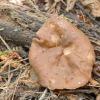
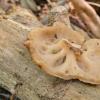
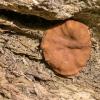
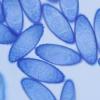
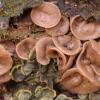
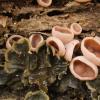
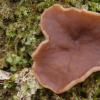
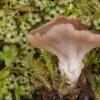

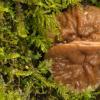
 gm-021-0001.jpg
gm-021-0001.jpg